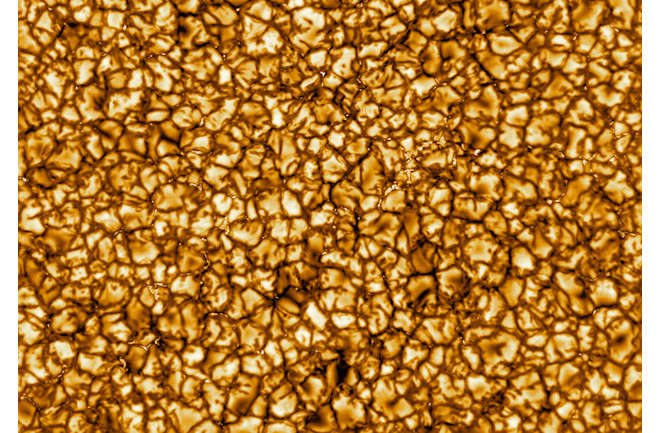Let’s start with the vacuum in space. You can read about it HERE before.
A vacuum is a volume in a given area that contains a negligible amount of matter. A vacuum is essentially an almost empty space.
Out there the almost empty space means that there is less than one atom per cubic meter between galaxies.
Less than 1 piece…
But so that we know where to place all this in our heads:
An average adult human body is made up of about 7,000,000,000,000,000,000,000,000,000 atoms.
7 trillion trillion trillion atoms. Or 7 octillion. =) In an area the size of one human body…
The soundlessly loud
It is a misconception that there is no sound in space. There is, but due to the vacuum of space, there is simply no material medium in which sound waves can propagate. Such media are, for example, air and water.
Under the conditions typical of space, sounds with frequencies audible to the human ear cannot propagate, but very low-frequency sounds can. Such are, for example, shock waves, which result in sonic booms in space.
Astronomers managed to find this by analyzing archival and recent radio telescope observations. A gamma-ray burst occurred in a galaxy 300 million LIGHT YEARS from us, i.e. a star collapsed into a black hole. In the short time of the burst, as much energy was released as our SUN produces in 10 billion years. When the material (matter flow) inside the star collided with the surrounding gas envelope, it created a powerful shock wave, a sonic boom, which appeared as a bright glow on recordings by instruments measuring radio waves.
From silent to loud
However, there are special devices that can convert the inaudible into audible sound for us. These include radio telescopes, gravitational wave detectors and, of course, space telescopes. Many objects out there emit electromagnetic radiation, in different ranges, such as radio waves, infrared waves or X-rays.
The signals captured by radio telescopes can be converted into sound using computer programs. This way, we can listen, for example, to the “rumble” of the Sun, the rhythmic clicking of pulsars or the “scream” of black holes.
Gravitational wave detectors detect and make audible distortions in the structure of space-time. Such as the collision of black holes, which propagate in the form of gravitational waves. These shock waves resemble a deep, rumbling sound.
Our space telescopes not only observe in the visible light range, but also in the infrared and X-ray ranges, for example, which can also be converted into sound.
We have already come across recordings of space telescopes released by NASA, which depict an object – or a given area with stars, etc. – and from the frightening to the pleasant, simple, or even quite complex musical composition can be heard underneath them. These are the sounds of the objects in the given image, which we call sonification.
Sonification is the conversion of non-verbal data into sound.
This works by processing the collected data using a mathematical method. This is necessary so that the data corresponds to the format required to create sounds. Different pitches, timbres and sound effects can be associated with each processed data.
Space sounds are also extremely interesting from a scientific perspective. They contribute greatly to understanding the functioning of the universe and we can discover unknown objects and phenomena through this. For example, we can infer their mass and rotation speed from the sound of black holes.
For example HERE you can browse through sonifications of data sent by Hubble by NASA.
Of course, – not only that – scientists are also experimenting with composing music from space data, thus trying to capture the beauty of the universe.
(not just) The scientists are also experimenting with composing music from space data, trying to capture the beauty of the universe.
The Sound of the Sun
“The Sun is extraordinarily loud,” said Craig Edward DeForest (USA, 1968 – ), an American heliophysicist and employee of the Space Research Division of the Southwest Research Institute, when asked what it would be like if we could hear the Sun.
If the sound of our Sun could propagate (and we could exclude some physical laws), it would be a perpetual white noise machine, roaring with the intensity of a rock concert every hour.
Our Sun is a STAR, a vortex of superheated plasma. As a result of the reactions in the core of the star, the so-called convection cells consisting of superheated gases constantly rise and fall on the surface. There are about a million of them on our Sun at any given time. One such cell is about the size of Texas.

“You have to imagine something the size of Texas emerging from below the surface, burning out and sinking, all in the space of five minutes,” DeForest says.
His calculations that each of the cells would emit about as much sound energy as a police siren. And since the surface of the Sun is about 10,000 times larger than the Earth:
“Imagine 10,000 Earths covered in police sirens, all screaming”
Since the Earth is about 92 million miles from the Sun, the sound would be muted by the time it got there. Based on his calculations, DeForest puts the Sun’s roar on Earth at about 100 decibels during the day. That’s a little quieter than a rock concert. That’s during the day, of course. At night, when we’re facing away from the Sun, the roar would die down.
“The sound itself would be something like a dull roar – DeForest says – because the sound waves coming at us would be composed of so many different frequencies. Imagine standing next to Niagara Falls all the time (it would actually be even louder — Niagara clocks in at around 90 decibels).”
Be a Nerdy Bird!